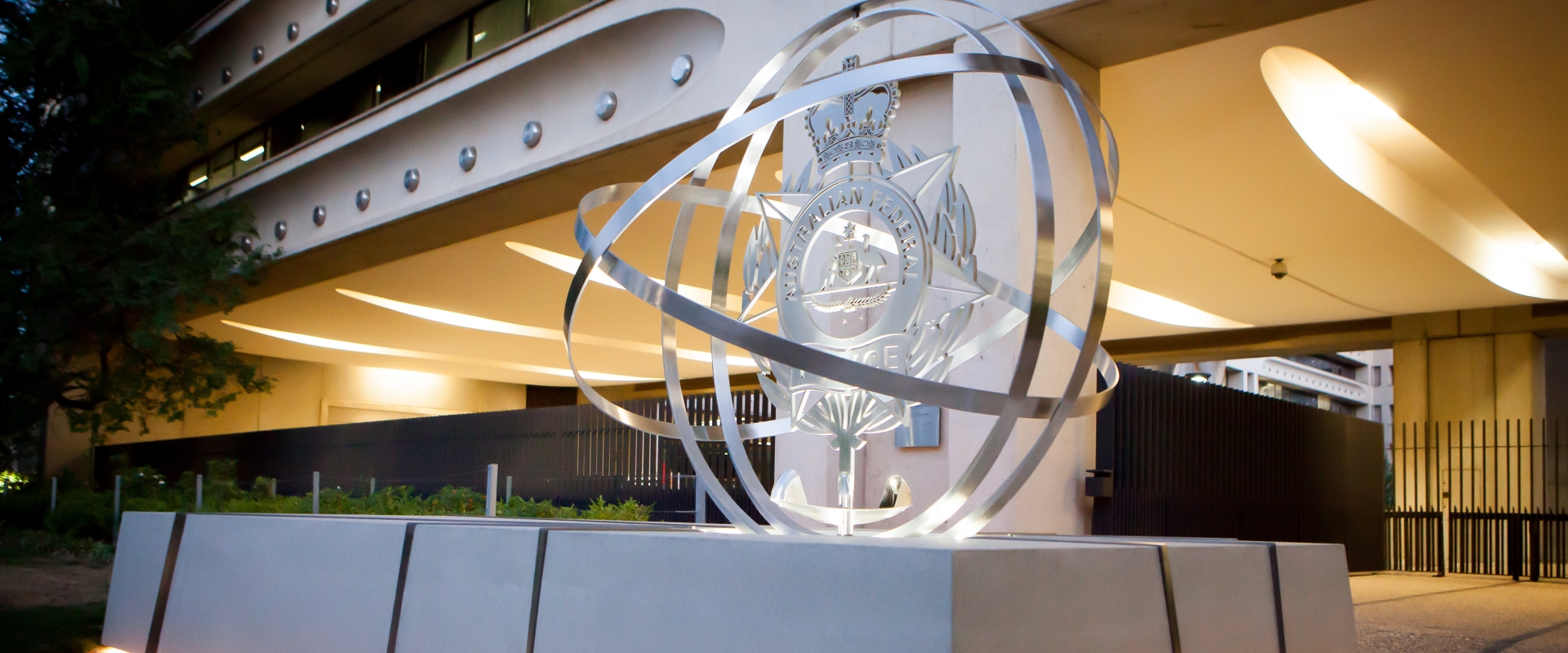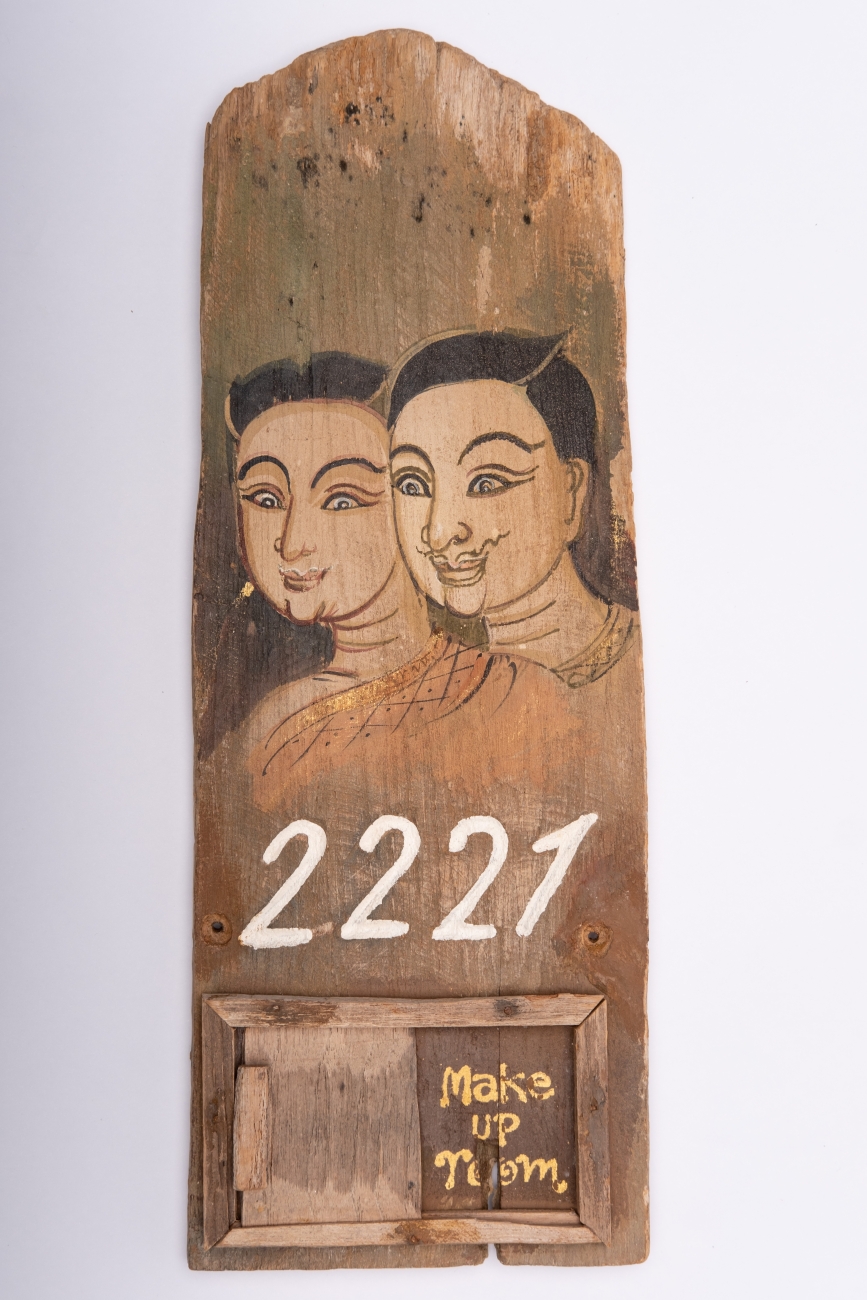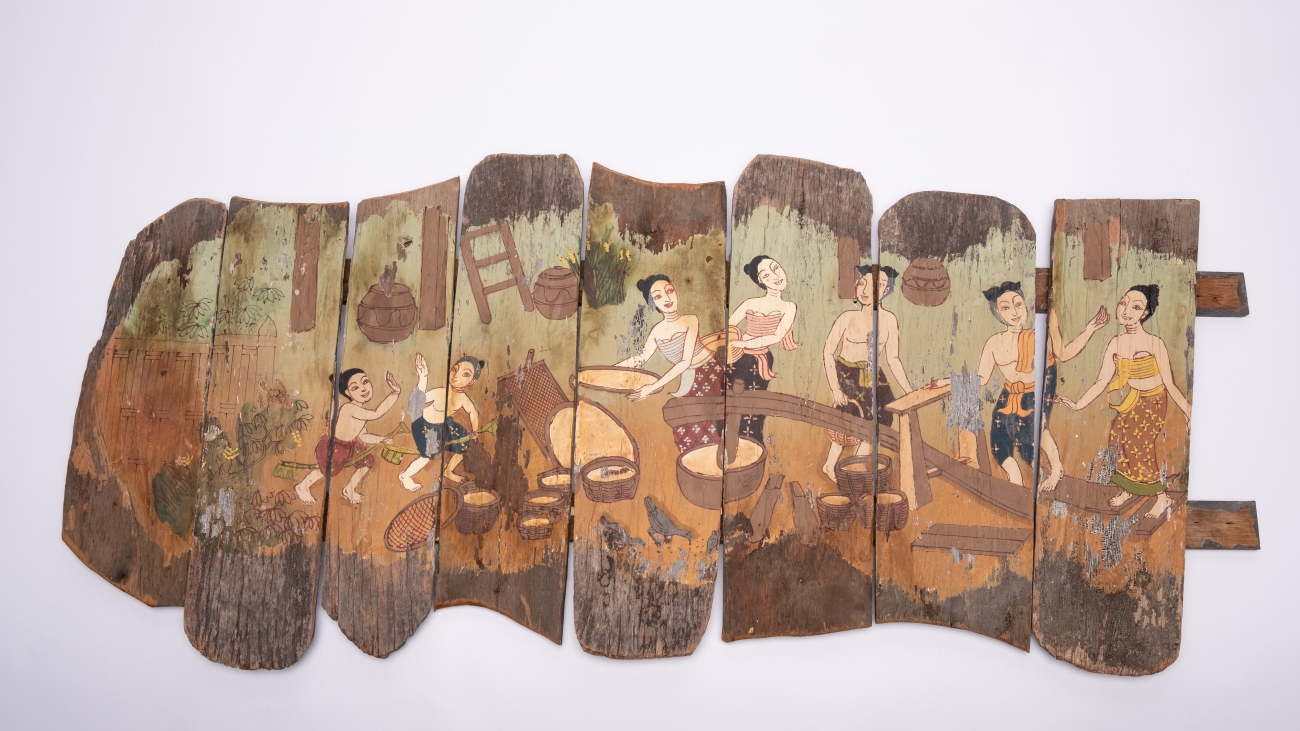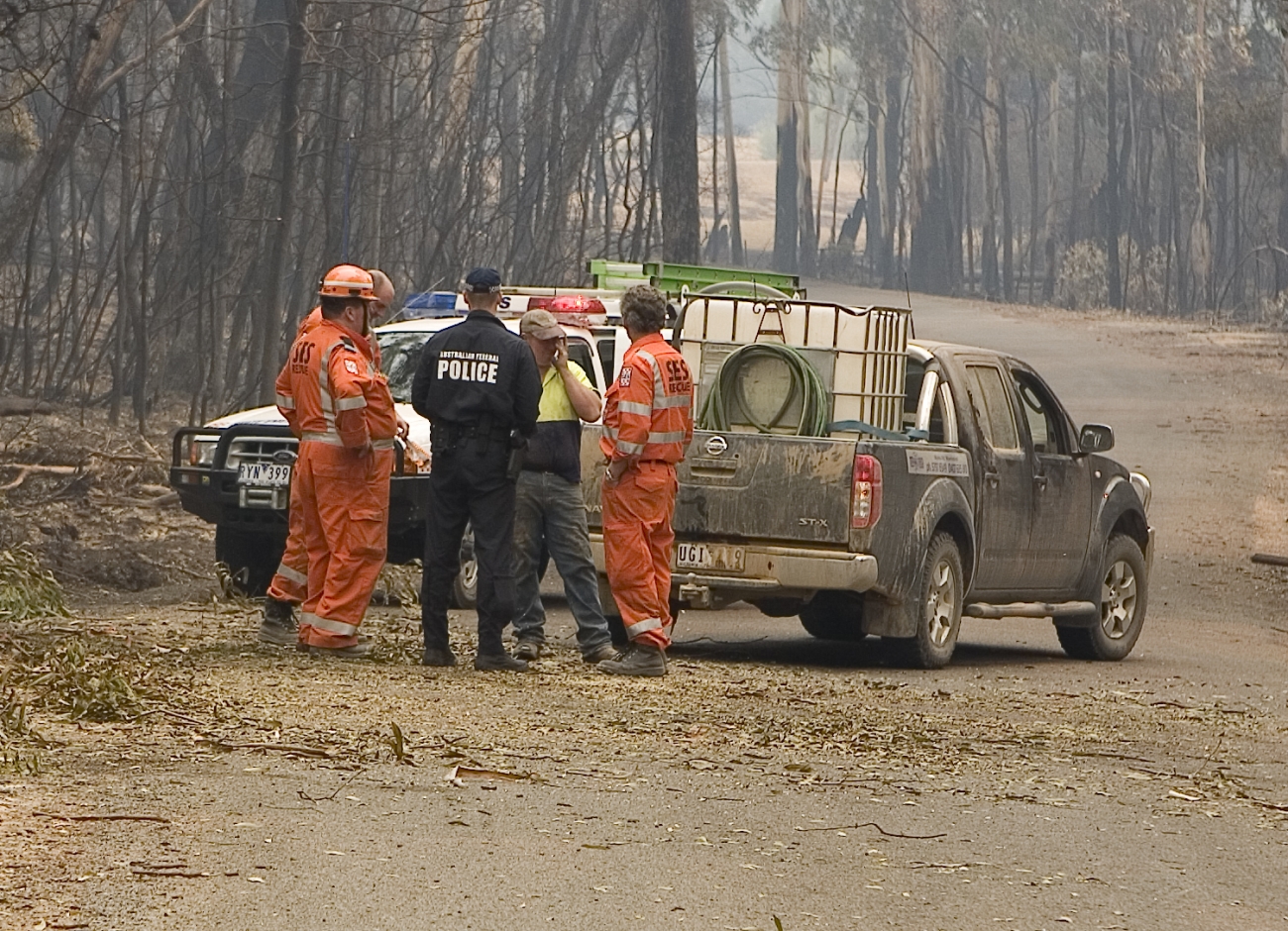DVI is the forensic process used for identifying human remains after a disaster. Identification could be of a complete body or small fragments. The process generally relies on:
- primary identifiers – fingerprints, dental and DNA
- secondary identifiers – for example, photographs, medical and general circumstances.
DVI investigations require a coordinated and cooperative response between agencies, including the police, forensic specialists, recovery agencies, victim support agencies, emergency services, non-government services and private companies both domestically and internationally.
Phases in the process
All Australian police jurisdictions, including us, follow the internationally accepted DVI processes set out by INTERPOL. The guidelines standardise DVI procedures to ensure consistency when an international response is required.
There are 5 phases in the guidelines. They can be intertwined, and the process takes time to run its course, depending on the nature and volume of the disaster.
- The scene – activities occur at the location and at the coroner's discretion, either simultaneously to, or immediately after, search-and-rescue operations.
- Post-mortem – activities are conducted in a mortuary or temporary facility on site, with autopsies at the coroner's discretion.
- Ante-mortem – our members and their counterparts interview family members to target the evidence collection and help find primary and secondary identification.
- Reconciliation – activities to match post-mortem and ante-mortem information and prepare identification reports.
- Debrief – operational and psychological debrief sessions for our members and their counterparts.
From the 2002 Bali bombings to the 2019 Whakaari / White Island volcano eruption, our DVI officers have served and continue to serve Australia and the AFP with honour. They're dedicated to identifying victims after a disaster.
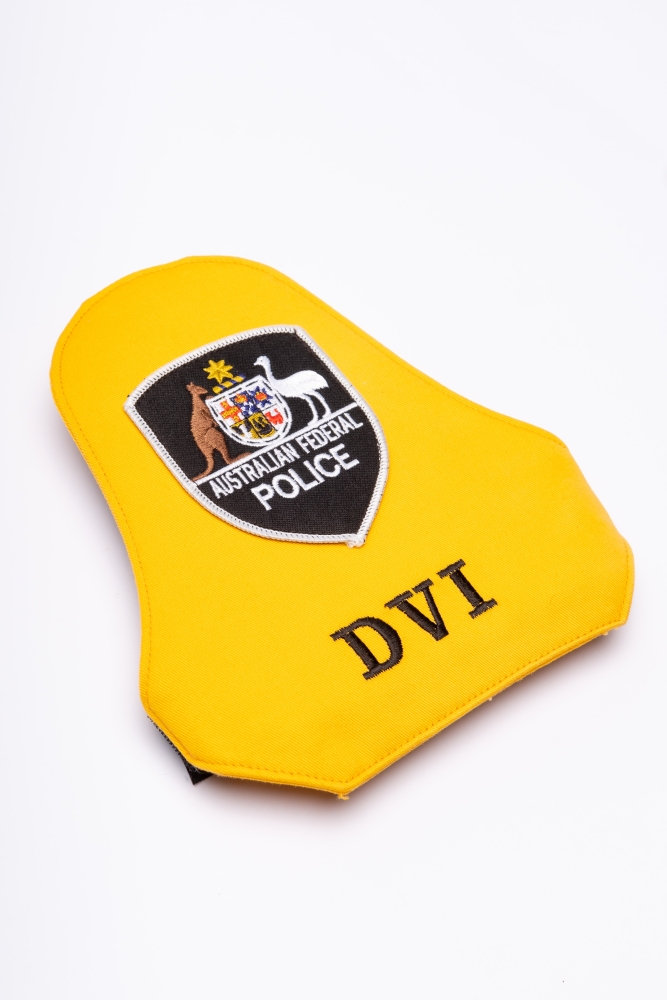
2002 Operation Alliance after the Bali bombings
The Bali bombings on Saturday 12 October 2002 killed 88 Australians and 202 people in total. Our detailed and dedicated response changed and improved the AFP forever. Including our DVI practices.
The first AFP officers at the scene in Bali triaged and identified victims. They worked alongside the Indonesian National Police (INP). Using INTERPOL's DVI process, the team:
- transported all victims to the mortuary on Sunday 13 October
- identified 60% of victims by dental analysis
- performed most of the DNA analysis at a 24-hour laboratory in Canberra
- identified and brought home all Australian victims by December 2002.
Indonesian forensics worked with the international community of forensic scientists. Our forensics staff played a major role. They worked on explosive residue analysis and DNA profiling. The team introduced new technologies, including 3D laser imaging technology. This helped gather evidence by reconstructing the crime scenes. They also used the models in the review of witness statements.
Our members also supported victims and their families. This led to the creation of the AFP’s Family Investigative Liaison Officer (FILO) program.
2004 Operation Cawdor after the Boxing Day tsunami
An earthquake in the Indian Ocean on Sunday 26 December 2004 caused one of the largest natural disasters in recorded history. The United Nations estimated more than 227,000 lost their lives in the coastal regions of 14 countries. Widespread damage in 15 countries displaced over 1.7 million people from their homes.
The Boxing Day tsunami started with an undersea earthquake near the Indonesian island of Sumatra. The quake’s magnitude was 9.1. The resulting tsunami caused extensive damage, death and displacement in Indonesia, Sri Lanka, India, Thailand, Myanmar, Somalia, Maldives and other countries.
Australia immediately deployed specialist teams of forensic scientists, pathologists and odontologists, family support staff and communications staff to Thailand. Operation Cawdor would provide valuable assistance to Thai authorities for the next 11 months.
Over 309 officers (AFP and state and territory police) deployed to Phuket during this time.
2007 Operation Succurro after the Garuda Airlines crash landing
On 7 March 2007, a Garuda Airlines flight crashed landed in Yogyakarta, Indonesia. A total of 21 passengers died, including 5 Australians. Two of them were AFP officers.
Australian Government officials (including 2 AFP members) and journalists were on the plane. They had been flying to Yogyakarta before an official visit by Australian politicians, the Hon Alexander Downer AC, Minister for Foreign Affairs, and the Hon Philip Ruddock AO, Attorney-General.
After the crash, we dispatched medical and DVI teams to help in Yogyakarta.
2009 Black Saturday bushfires in Victoria
The Black Saturday bushfires on 7 February 2009 caused widespread devastation and loss throughout Victoria. A total of 173 people died and 414 people injured. More than 2,000 homes destroyed. An area of 450,000 hectares burned.
The AFP supported Victoria Police with a range of vital tasks in the days and weeks that followed. DVI teams assisted by searching for victims and supporting the National Registration Inquiry Service. The system helps provide details and whereabouts of people affected by the fires.
On arrival, AFP officers were sworn in as Special Constables in the Victoria Police. This enabled them to enforce Victorian state laws with full police powers. These members came from across the AFP, including ACT Policing and Sydney, Melbourne and Brisbane offices.
2010 Operation Pallarenda after the Christmas Island boat tragedy
On 15 December 2010, an Indonesian 'fishing' vessel smashed into cliffs at 'Rocky Point', Flying Fish Cove, Christmas Island.
The boat was carrying 89 asylum seekers and 3 crew. The tragic incident resulted in the death of 50 people, while 42 people survived. The asylum seekers were from Iran and Iraq. Rescuers found a total of 30 bodies, while 20 were not found.
Australia's National Security Advisor requested the AFP Commissioner take responsibility for the repatriation of the bodies. For the next 3 months, AFP officers co-ordinated the repatriation.
DVI teams followed INTERPOL identification procedures. Identification of bodies was difficult. It required interviews with next-of-kin in detention centres, elsewhere in Australia, and overseas.
Islamic leaders helped throughout the process. Some victims were identified and buried in Australia at the request of their families. Others were returned to Iran and Iraq.
2014 Operation Arew and Malaysia Airlines Flight MH17
There were 298 people on board Malaysia Airlines flight MH17 from Amsterdam to Kuala Lumpur when it was shot down on 17 July 2014. All 298 passengers and crew died, including 38 Australians. The largest loss of life to Australians internationally since the 2002 Bali bombings.
The AFP deployed over 180 personnel to Ukraine, and other key locations in Europe as part of Operation Arew. AFP officers undertook various duties: search, investigations, intelligence, DVI and forensics support.
Australia, Belgium, Malaysia, the Netherlands and Ukraine signed a Joint Investigation Team Arrangement to assist with the multinational Dutch-led criminal investigation.
The investigation met the highest international standards. It accepted the inherent challenges associated with protracted, multi-jurisdictional investigations. It obtained evidence in separatist-controlled Ukrainian territory.
AFP experts worked with a forensic expert group of international specialists. The group ensured a holistic, coordinated and strategic approach to the complex and challenging task. Dr Simon Walsh led the DVI team for the AFP.
'The complexity of this incident where a passenger plane was shot down by virtue of a conflict, and then actually landed in the conflict zone made that hugely complex from the outset,' Dr Walsh said.
It took 3 weeks for the first victim identification. All 38 Australian victims were identified. The last Australian was identified on 5 December 2014, 6 months after the plane was shot down.
'There's a huge amount of anticipation because this process takes time,' Dr Walsh said. 'That's a terrible time for those families.'
2016 Operation Finsen after Canberra house fire
In February 2016, a house fire occurred in Bonner, ACT. A search of the premise identified 3 deceased persons. An adult female and 2 children.
The ACT Coroner was consulted. ACT Policing deployed DVI team members. The teams used INTERPOL processes to identify the deceased persons.
The 3 deceased persons were believed to be related. AFP biologists used DNA as the primary source of identification. DNA samples were obtained during post-mortem procedures. Samples were matched to ante-mortem newborn screening cards. The ‘Guthrie cards’ contain bloodspot samples obtained soon after birth. These confirmed the identities of the 2 children.
Biologists used familial DNA-matching techniques to confirm the identity of the adult female.
This was the first known use of newborn screening cards to identify persons killed in the ACT.
2019 Operation Natone after Whakaari / White Island eruption
On 9 December 2019, the Whakaari/White Island volcano in New Zealand’s Bay of Plenty erupted. The eruption killed 22 people, including 17 Australians.
The AFP joined an operation led by the Australian Government Department of Foreign Affairs and Trade to help. Working with New Zealand Police to recover the bodies. As well as identify all 22 victims.
Members of the AFP, New South Wales Police Force and Queensland Police Force deployed to New Zealand to help. Officers also deployed around Australia to engage with family members of the deceased.
Access to the scene was difficult. DVI teams dealt with extreme rain and toxic gases from the volcano.
Australia and New Zealand have built a strong relationship over many years of joint DVI operations. Mutual respect and complementary skills were crucial to the recovery and identification of the deceased.
The sea search for the final 2 victims, one Australian and one New Zealander, stopped on 23 December 2019.

